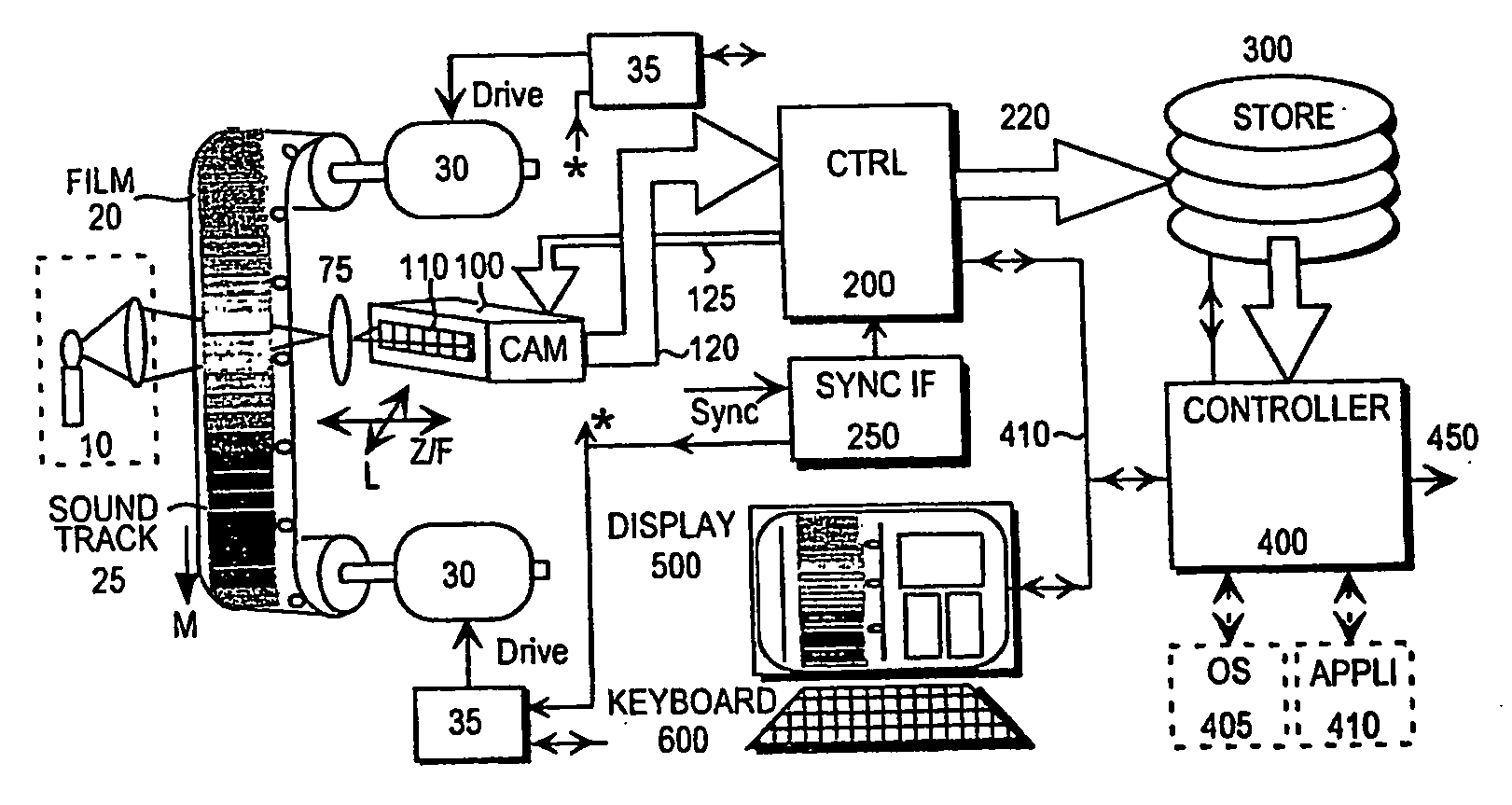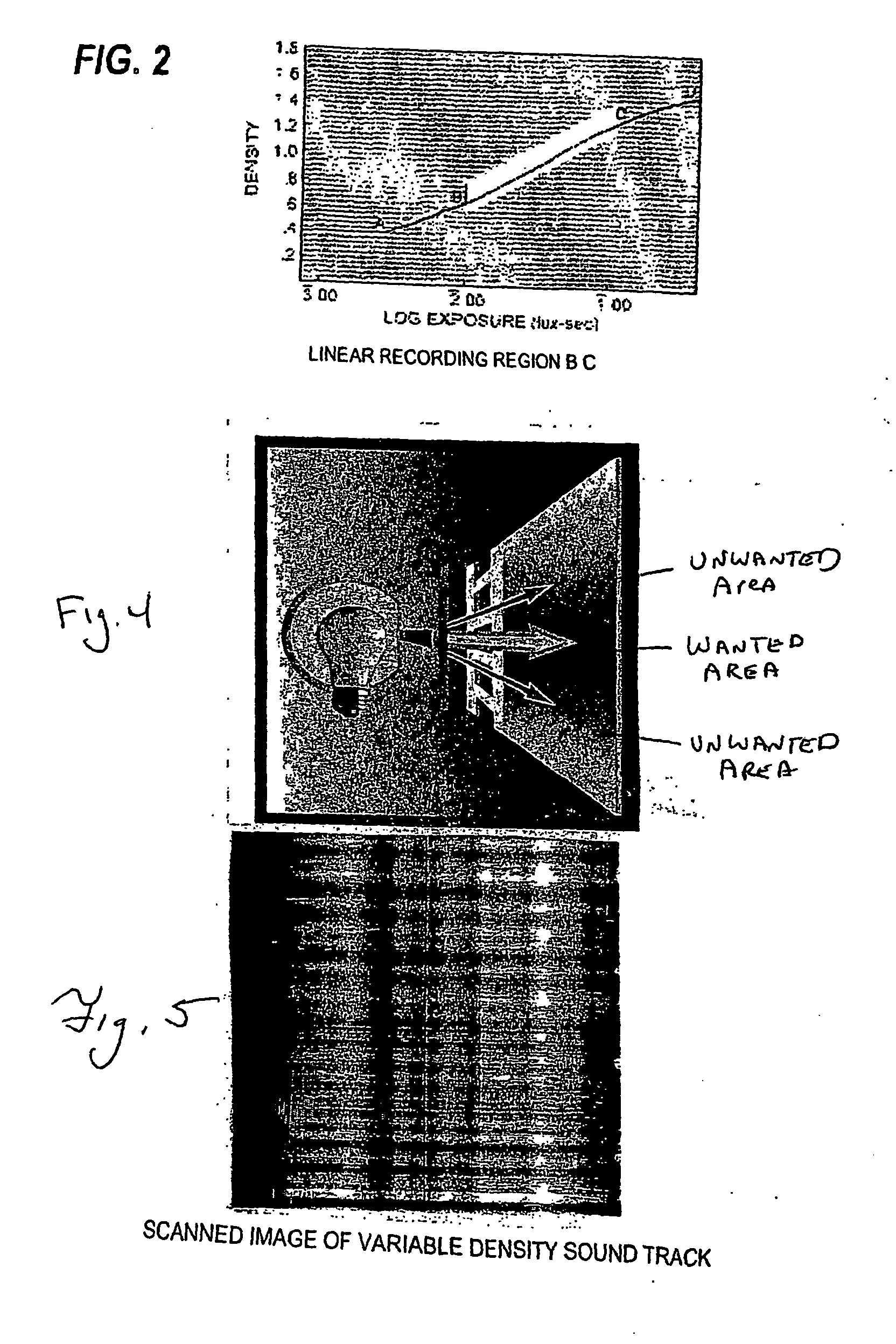Digital reproduction of variable density film soundtracks
a variable density, film sound technology, applied in the direction of electronic editing digitised analogue information signals, instruments, viewfinders, etc., can solve the problems of low signal-to-noise ratio and signal amplitude distortion, the film track immediately adjacent to the intended exposure area is affected, and the analog film sound recording technique incurs imperfections, etc., to achieve the effect of restoring quality and eliminating deficiencies
- Summary
- Abstract
- Description
- Claims
- Application Information
AI Technical Summary
Benefits of technology
Problems solved by technology
Method used
Image
Examples
Embodiment Construction
[0044]FIG. 3 depicts a block schematic diagram of a system in accordance with one aspect of the present principles for reproducing and processing an analog optically recorded audio soundtrack on a motion picture film 20. The apparatus of FIG. 3 includes a light source 10 whose light rays project onto the film 20, which includes an audio soundtrack 25, depicted in FIG. 3 with an exaggerated width dimension. The audio soundtrack 25 is optically recorded by means of a variable density recording method.
[0045] In a conventional film sound reproducer light from source 10 passes through the film 20 and the track 25 so as to emerge with an intensity varying in accordance with the method employed for exposing the film to record the soundtrack. A photocell or solid-state photo detector (not shown) gathers the varying-intensity light. The photo sensor usually generates a current or voltage in accordance with the intensity of the transmitted light. The analog audio output signal from the photo...
PUM
| Property | Measurement | Unit |
|---|---|---|
| frequency | aaaaa | aaaaa |
| size | aaaaa | aaaaa |
| size | aaaaa | aaaaa |
Abstract
Description
Claims
Application Information
 Login to View More
Login to View More - R&D
- Intellectual Property
- Life Sciences
- Materials
- Tech Scout
- Unparalleled Data Quality
- Higher Quality Content
- 60% Fewer Hallucinations
Browse by: Latest US Patents, China's latest patents, Technical Efficacy Thesaurus, Application Domain, Technology Topic, Popular Technical Reports.
© 2025 PatSnap. All rights reserved.Legal|Privacy policy|Modern Slavery Act Transparency Statement|Sitemap|About US| Contact US: help@patsnap.com



